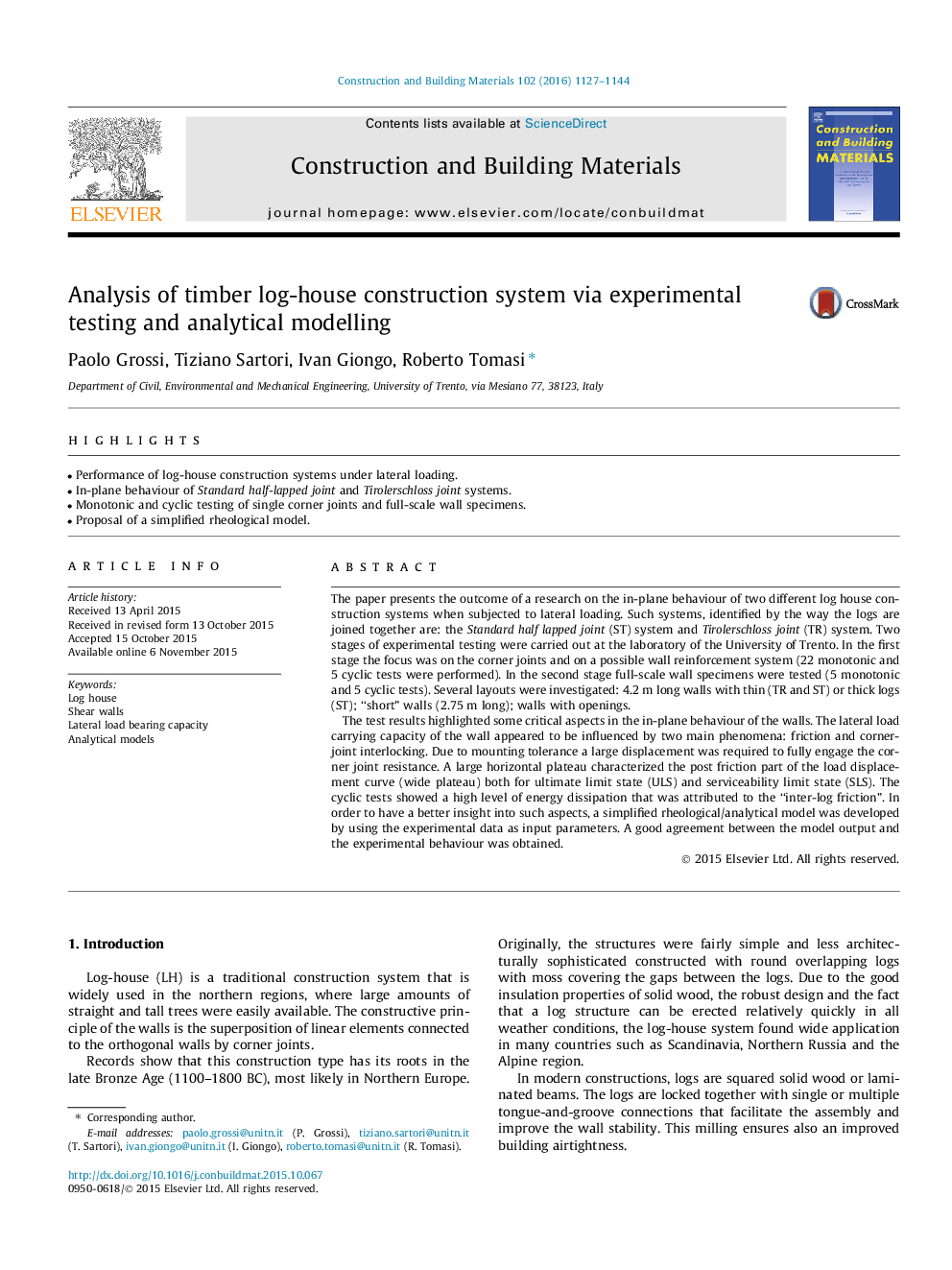| کد مقاله | کد نشریه | سال انتشار | مقاله انگلیسی | نسخه تمام متن |
|---|---|---|---|---|
| 256442 | 503550 | 2016 | 18 صفحه PDF | دانلود رایگان |
• Performance of log-house construction systems under lateral loading.
• In-plane behaviour of Standard half-lapped joint and Tirolerschloss joint systems.
• Monotonic and cyclic testing of single corner joints and full-scale wall specimens.
• Proposal of a simplified rheological model.
The paper presents the outcome of a research on the in-plane behaviour of two different log house construction systems when subjected to lateral loading. Such systems, identified by the way the logs are joined together are: the Standard half lapped joint (ST) system and Tirolerschloss joint (TR) system. Two stages of experimental testing were carried out at the laboratory of the University of Trento. In the first stage the focus was on the corner joints and on a possible wall reinforcement system (22 monotonic and 5 cyclic tests were performed). In the second stage full-scale wall specimens were tested (5 monotonic and 5 cyclic tests). Several layouts were investigated: 4.2 m long walls with thin (TR and ST) or thick logs (ST); “short” walls (2.75 m long); walls with openings.The test results highlighted some critical aspects in the in-plane behaviour of the walls. The lateral load carrying capacity of the wall appeared to be influenced by two main phenomena: friction and corner-joint interlocking. Due to mounting tolerance a large displacement was required to fully engage the corner joint resistance. A large horizontal plateau characterized the post friction part of the load displacement curve (wide plateau) both for ultimate limit state (ULS) and serviceability limit state (SLS). The cyclic tests showed a high level of energy dissipation that was attributed to the “inter-log friction”. In order to have a better insight into such aspects, a simplified rheological/analytical model was developed by using the experimental data as input parameters. A good agreement between the model output and the experimental behaviour was obtained.
Journal: Construction and Building Materials - Volume 102, Part 2, 15 January 2016, Pages 1127–1144
